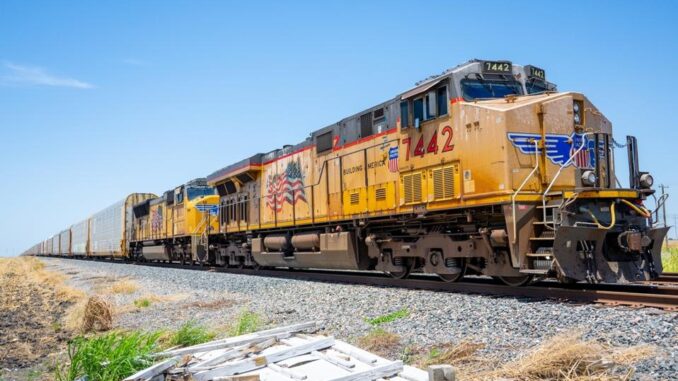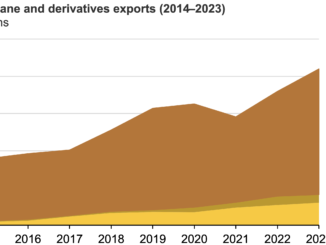
In a landmark move poised to reshape America’s freight rail landscape, Union Pacific (UP) and Norfolk Southern (NS) announced a proposed $85 billion merger on July 29, 2025. This deal, if approved by regulators, would create the nation’s first true transcontinental railroad, spanning over 50,000 miles across 43 states and unifying the western and eastern rail networks.
The merger comes at a critical time for the U.S. petrochemical industry, which relies heavily on efficient rail transport to move vast quantities of feedstocks and finished products. By eliminating costly interchanges and streamlining coast-to-coast shipments, the combined entity could significantly enhance supply chain efficiency, reduce costs, and bolster global competitiveness for petrochemical producers.
The Merger’s Core Benefits for Petrochemicals
The Gulf Coast region, home to nearly 90% of U.S. petrochemical production, stands to gain immensely from this integration.
Are you from California or New York and need a tax break?
Currently, shipments of key products like polyethylene, polypropylene, methanol, and ammonia often require handoffs between multiple Class I railroads, leading to delays, higher costs, and increased risks. The UP-NS merger would enable single-line service from production hubs like Houston and Lake Charles to eastern markets and ports such as Pittsburgh, Savannah, and Norfolk.
This efficiency boost is expected to generate up to $2.75 billion in annual synergies through reduced interchanges and operational overlaps.
For the petrochemical sector, this translates to lower transportation expenses, critical in an industry where logistics can account for a significant portion of costs. Moreover, the deal could alleviate congestion at the Port of Houston, the primary export gateway for U.S. petrochemicals, by shifting volumes eastward and providing better access to multiple ports.
As global demand rises, particularly in Asia and Latin America for gas-based derivatives, improved rail connectivity would help U.S. producers maintain their edge over international competitors. Historical parallels underscore the potential impact. The recent Canadian Pacific-Kansas City Southern merger created a seamless north-south corridor, and experts view the UP-NS deal as a similar “connectivity play” rather than a market consolidation.
Unlike past mergers that faced antitrust scrutiny for overlapping routes, UP and NS have minimal geographic overlap, positioning the deal as one that enhances competition, especially on east-west routes.
However, not all stakeholders are enthusiastic. Fuel and petrochemical shippers have voiced concerns about reduced competition, urging the Surface Transportation Board (STB) to block the merger over fears of higher rates and diminished service options.
Despite these worries, proponents argue the merger’s private funding—no taxpayer dollars involved—makes it a low-risk opportunity to modernize infrastructure and support the evolving energy markets.
Impacts on the Downstream Petrochemical Market
The downstream petrochemical market, encompassing the production of plastics, resins, fertilizers, and specialty chemicals, could see transformative effects from the merger. Downstream operations often involve transporting refined products from Gulf Coast refineries to manufacturing centers in the Midwest and East Coast, where they are converted into consumer goods like packaging, automotive parts, and agricultural inputs. With a unified rail network, downstream players could benefit from faster, more reliable deliveries, potentially reducing inventory holding costs and enabling just-in-time manufacturing.
For instance, the elimination of interchanges could cut transit times by days, allowing companies like Dow Chemical or ExxonMobil to optimize their supply chains and respond more agilely to market fluctuations.
This is particularly vital as the U.S. pushes for reshoring manufacturing, increasing domestic demand for petrochemical derivatives. Additionally, the merger could help rail reclaim market share from trucking in short-haul intermodal lanes, where petrochemical shipments have shifted due to rail inefficiencies.
Lower rail costs might encourage downstream firms to favor rail over trucks for bulk shipments, reducing overall logistics expenses and environmental footprints. However, if the merger leads to pricing power for the combined railroad, some downstream manufacturers fear rate hikes that could squeeze margins in an already competitive sector. Broader economic ripple effects include enhanced export capabilities. With better east-west connectivity, downstream products could reach international markets more efficiently, supporting U.S. trade balances amid shifting global patterns. Analysts project revenue growth of up to $1.75 billion for the merged entity, much of which could stem from increased petrochemical volumes.
How Investors Could Take Advantage of the Merger
For investors eyeing the energy and transportation sectors, the UP-NS merger presents intriguing opportunities, though it carries regulatory risks as the STB reviews the deal. If approved, the combined company could deliver robust free cash flow growth and enhanced shareholder returns through dividends and buybacks, driven by those $2.75 billion in synergies. Direct exposure comes via stocks: Union Pacific (NYSE: UNP) and Norfolk Southern (NYSE: NSC). The deal values NS at $320 per share in a stock-and-cash transaction, offering a premium that activist investors like Ancora Holdings have already capitalized on. Post-merger, the entity might see earnings accretion, with analysts forecasting significant upside from operational efficiencies. Investors could also consider competitors like Berkshire Hathaway’s BNSF Railway, which may face heightened competition but could benefit from industry-wide improvements.In the petrochemical space, companies poised to gain from lower transport costs—such as LyondellBasell, Chevron Phillips Chemical, or Formosa Plastics—might see margin expansions, making their stocks attractive. Broader plays include ETFs like the iShares U.S. Transportation ETF (IYT) or the SPDR S&P Chemicals ETF (XCH), which could rally on improved sector dynamics.
That said, regulatory hurdles remain a wildcard; past rail mergers have faced delays or conditions. Investors should monitor STB proceedings and diversify to mitigate risks.
In summary, the UP-NS merger could be a game-changer for the petrochemical industry, fostering efficiency and growth while offering savvy investors a chance to ride the rails to potential profits. As the deal progresses, it underscores the intertwined fate of energy, logistics, and economic vitality in the U.S.
Is Oil & Gas Right for Your Portfolio?
Crude Oil, LNG, Jet Fuel price quote
ENB Top News
ENB
Energy Dashboard
ENB Podcast
ENB Substack






